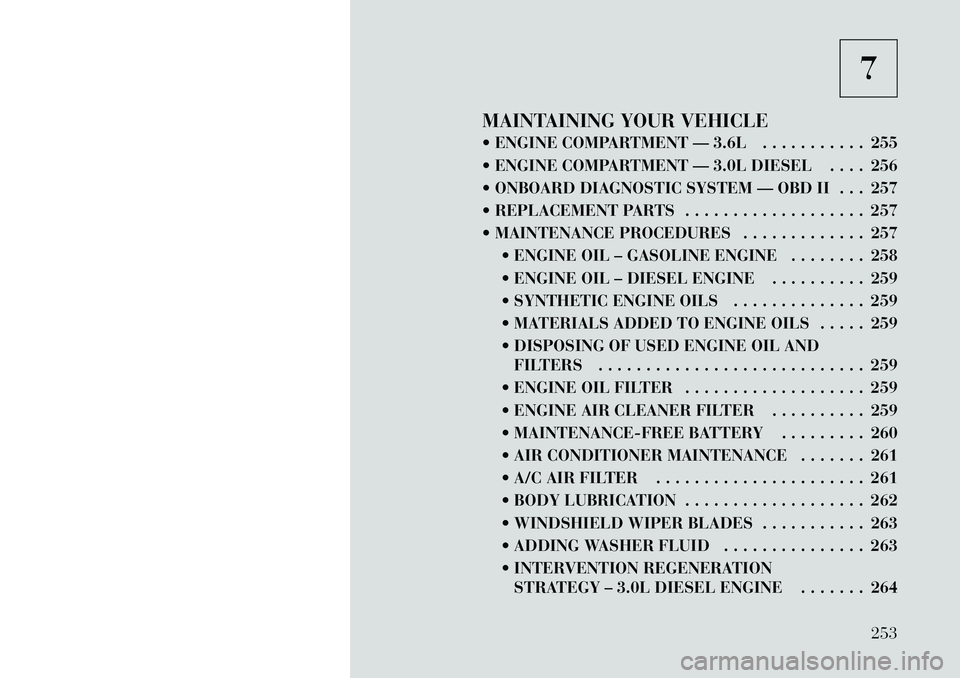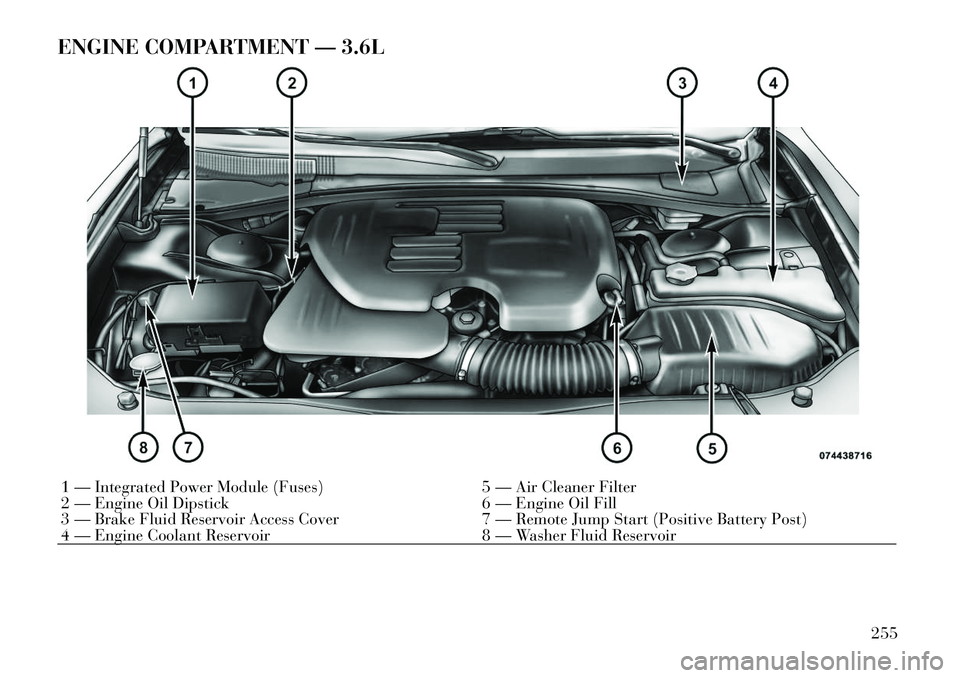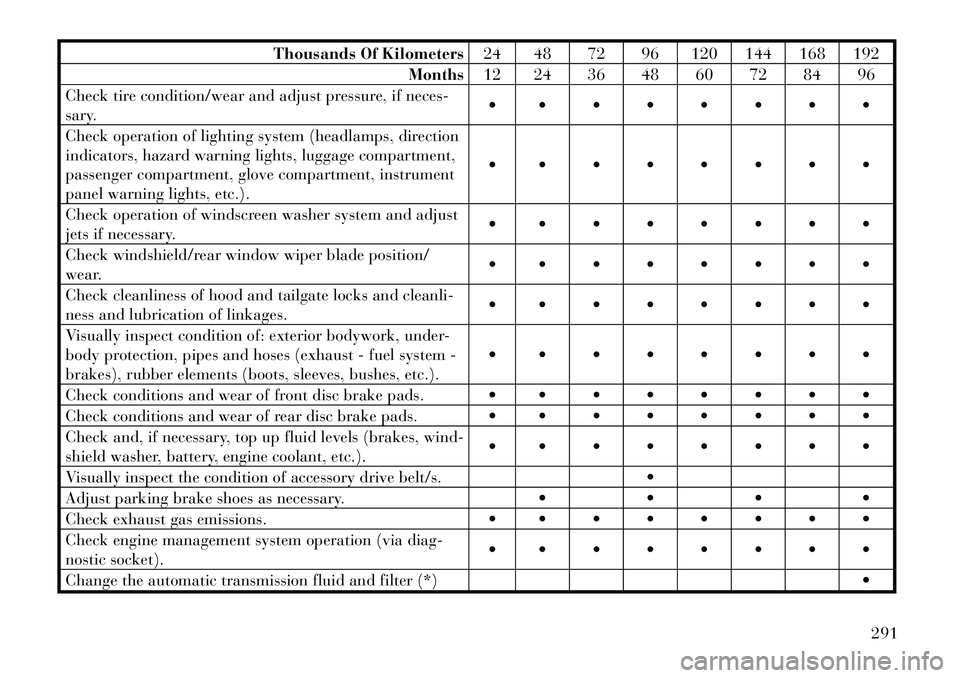washer fluid Lancia Thema 2012 Owner handbook (in English)
[x] Cancel search | Manufacturer: LANCIA, Model Year: 2012, Model line: Thema, Model: Lancia Thema 2012Pages: 316, PDF Size: 3.85 MB
Page 116 of 316

WINDSHIELD WIPERS
AND WASHERS
The multifunction lever operates the
windshield wipers and washer when
the ignition is placed in the ON/RUN
or ACC position. The multifunction
lever is located on the left side of the
steering column.
Rotate the end of the multifunction
lever to the first detent, past the inter-
mittent settings for low-speed wiper
operation, or to the second detent past
the intermittent settings for high-
speed wiper operation.
CAUTION!
Turn the windshield wipers offwhen driving through an auto-
matic car wash. Damage to the
windshield wipers may result if
the wiper control is left in any
position other than off.
In cold weather, always turn off
the wiper switch and allow the
wipers to return to the “Park” po-
sition before turning off the en-
gine. If the wiper switch is left on
and the wipers freeze to the wind-
shield, damage to the wiper motor
may occur when the vehicle is re-
started.
Always remove any buildup of
snow that prevents the windshield
wiper blades from returning to the
off position. If the windshield
wiper control is turned off and the
blades cannot return to the off
position, damage to the wiper mo-
tor may occur.
INTERMITTENT WIPER
SYSTEM
Use the intermittent wiper when
weather conditions make a single wiping cycle with a variable pause
between cycles desirable. Rotate the
end of the multifunction lever to the
first detent position, and then turn the
end of the lever to select the desired
delay interval. There are four delay
settings, which allow you to regulate
the wipe interval from a minimum of
one cycle every second to a maximum
of approximately 18 seconds between
cycles. The delay intervals will double
in duration when the vehicle speed is
16 km/h or less.
MIST FEATURE
Rotate the end of the lever downward
to the Mist position to activate a single
wipe cycle to clear off road mist or
spray from a passing vehicle. The
wipers will continue to operate until
you release the multifunction lever.
NOTE:
The mist feature does not activate
the washer pump; therefore, no
washer fluid will be sprayed on the
windshield. The wash function
must be used in order to spray the
windshield with washer fluid.
Windshield Wiper/Washer Control
110
Page 118 of 316

NOTE:
The Rain Sensing feature willnot operate when the wiper
speed is in the low or high posi-
tion.
The Rain Sensing feature may not function properly when ice
or dried salt water is present on
the windshield.
Use of RainX® or products containing wax or silicone may
reduce rain sensor performance.
The Rain Sensing system has protec-
tive features for the wiper blades and
arms. It will not operate under the
following conditions:
Low Temperature Wipe Inhibit
— The Rain Sensing feature will
not operate when the ignition is
placed in the RUN position, the ve-
hicle is stationary and the outside
temperature is below 0°C, unless
the wiper control on the multifunc-
tion lever is moved, the vehicle
speed becomes greater than 0 km/h
or the outside temperature rises
above freezing.
Neutral Wipe Inhibit — The Rain
Sensing feature will not operate
when the ignition is placed in the
RUN position, the transmission
shift lever is in the NEUTRAL po-
sition and the vehicle speed is less
than 8 km/h, unless the wiper con-
trol on the multifunction lever is
moved or the shift lever is moved
out of the NEUTRAL position.
HEADLIGHT WASHERS
(for versions/markets,
where provided)
The multifunction lever operates the
headlight washers when the ignition
switch is in the ON position and the
headlights are turned on. The multi-
function lever is located on the left
side of the steering column.
To use the headlight washers, push
the multifunction lever inward (to-
ward the steering column) to the sec-
ond detent and release it. The head-
light washers will spray a timed high-
pressure spray of washer fluid onto
each headlight lens. In addition, the windshield washers will spray the
windshield and the windshield wipers
will cycle.
NOTE:
After turning the ignition switch
and headlights ON, the headlight
washers will operate on the first
spray of the windshield washer
and then every eleventh spray after
that.
TILT/TELESCOPING
STEERING COLUMN
This feature allows you to tilt the
steering column upward or down-
ward. It also allows you to lengthen or
shorten the steering column. The tilt/
telescoping control handle is located
below the steering wheel at the end of
the steering column.
Tilt/Telescoping Control Handle
112
Page 168 of 316

Adaptive Cruise Control (ACC)SET This telltale will illuminate
when the ACC is SET. For
further information, refer
to “Adaptive Cruise Control
(ACC)” in “Understanding The Fea-
tures Of Your Vehicle.”
EVIC AMBER TELLTALES
This area will show reconfigurable
amber caution telltales. These tell-
tales include:
Forward Collision Warning
(FCW) OFF This telltale informs the
driver that the Forward
Collision Warning feature is
Off. The telltale is On when
the front radar sensor is blocked and
requires cleaning, the ACC/FCW sen-
sors require service, or the ACC/FCW
system is unavailable because of a
system error. For further information,
refer to “Adaptive Cruise Control
(ACC)” in “Understanding The Fea-
tures Of Your Vehicle.” Low Fuel Telltale
When the fuel level reaches ap-
proximately 11.0 L this light
will turn on, and remain on until
fuel is added.
Windshield Washer Fluid Low Indicator This telltale will turn on to
indicate the windshield
washer fluid is low.
Adaptive Cruise Control (ACC) Malfunction This light will turn on when
a ACC is not operating and
needs service. For further
information, refer to
“Adaptive Cruise Control (ACC)” in
“Understanding The Features Of
Your Vehicle.”
Wait To Start Light — Diesel
Engines Only The Wait To Start Light will
turn on when the ignition key is
first turned to the ON/RUN position.
Wait until the Wait To Start Light
turns OFF to start the engine. (Refer to “Starting Procedures” in “Starting
And Operating” for further informa-
tion).
Water In Fuel Indicator Light —
Diesel Engines Only Indicates there is water de-
tected in the fuel filter. If
this light remains on, DO
NOT start the vehicle be-
fore you drain the water from the fuel
filter to prevent engine damage. Refer
to “Maintenance Procedures/ Drain-
ing Fuel/Water Separator Filter” in
“Maintaining Your Vehicle” for water
drain procedure.
EVIC RED TELLTALES
This area will show reconfigurable red
telltales. These telltales include:
Door Ajar
This telltale turns on when
one or more doors are ajar.
The telltale will show which
doors are ajar.162
Page 259 of 316

7
MAINTAINING YOUR VEHICLE
ENGINE COMPARTMENT — 3.6L . . . . . . . . . . . 255
ENGINE COMPARTMENT — 3.0L DIESEL . . . . 256
ONBOARD DIAGNOSTIC SYSTEM — OBD II . . . 257
REPLACEMENT PARTS . . . . . . . . . . . . . . . . . . . 257
MAINTENANCE PROCEDURES . . . . . . . . . . . . . 257 ENGINE OIL – GASOLINE ENGINE . . . . . . . . 258
ENGINE OIL – DIESEL ENGINE . . . . . . . . . . 259
SYNTHETIC ENGINE OILS . . . . . . . . . . . . . . 259
MATERIALS ADDED TO ENGINE OILS . . . . . 259
DISPOSING OF USED ENGINE OIL ANDFILTERS . . . . . . . . . . . . . . . . . . . . . . . . . . . . 259
ENGINE OIL FILTER . . . . . . . . . . . . . . . . . . . 259
ENGINE AIR CLEANER FILTER . . . . . . . . . . 259
MAINTENANCE-FREE BATTERY . . . . . . . . . 260
AIR CONDITIONER MAINTENANCE . . . . . . . 261
A/C AIR FILTER . . . . . . . . . . . . . . . . . . . . . . 261
BODY LUBRICATION . . . . . . . . . . . . . . . . . . . 262
WINDSHIELD WIPER BLADES . . . . . . . . . . . 263
ADDING WASHER FLUID . . . . . . . . . . . . . . . 263
INTERVENTION REGENERATION STRATEGY – 3.0L DIESEL ENGINE . . . . . . . 264
253
Page 261 of 316

ENGINE COMPARTMENT — 3.6L1 — Integrated Power Module (Fuses)5 — Air Cleaner Filter
2 — Engine Oil Dipstick 6 — Engine Oil Fill
3 — Brake Fluid Reservoir Access Cover 7 — Remote Jump Start (Positive Battery Post)
4 — Engine Coolant Reservoir 8 — Washer Fluid Reservoir
255
Page 262 of 316

ENGINE COMPARTMENT — 3.0L DIESEL1 — Totally Integrated Power Module (Fuses)5 — Engine Air Cleaner Filter
2 — Engine Oil Fill 6 — Engine Oil Dipstick
3 — Brake Fluid Reservoir 7 — Washer Fluid Reservoir
4 — Engine Coolant Reservoir
256
Page 269 of 316

WINDSHIELD WIPER
BLADES
Clean the rubber edges of the wiper
blades and the windshield periodi-
cally with a sponge or soft cloth and a
mild nonabrasive cleaner. This will
remove accumulations of salt or road
film.
Operation of the wipers on dry glass
for long periods may cause deteriora-
tion of the wiper blades. Always use
washer fluid when using the wipers to
remove salt or dirt from a dry wind-
shield.
Avoid using the wiper blades to re-
move frost or ice from the windshield.
Keep the blade rubber out of contact
with petroleum products such as en-
gine oil, gasoline, etc.
NOTE:
Life expectancy of wiper blades
varies depending on geographical
area and frequency of use. Poor
performance of blades may be
present with chattering, marks,
water lines or wet spots. If any ofthese conditions are present, clean
the wiper blades or replace as nec-
essary.
ADDING WASHER FLUID
The windshield washer and the head-
light washer (for versions/markets,
where provided) share the same fluid
reservoir. The fluid reservoir is lo-
cated in the front of the engine com-
partment. Be sure to check the fluid
level in the reservoir at regular inter-
vals. Fill the reservoir with windshield
washer solvent (not radiator anti-
freeze) and operate the system for a
few seconds to flush out the residual
water.
When refilling the washer fluid reser-
voir, apply some washer fluid to a
cloth or towel and wipe the wiper
blades clean. This will help blade per-
formance.
To prevent freeze-up of your wind-
shield washer system in cold weather,
select a solution or mixture that meets
or exceeds the temperature range of
your climate. This rating information
can be found on most washer fluid
containers.The fluid reservoir will hold nearly
4 Liters of washer fluid when the mes-
sage “Low Washer Fluid” appears in
the Electronic Vehicle Information
Center (EVIC) (for versions/markets,
where provided).
WARNING!
Commercially available windshield
washer solvents are flammable.
They could ignite and burn you.
Care must be exercised when filling
or working around the washer solu-
tion.CAUTION!
Car maintenance should be done at
a LANCIA Dealership. For routine
and minor maintenance operations
you wish to carry out yourself, we do
recommend you have the proper
equipment, genuine LANCIA spare
parts and the necessary fluids; do
not however carry out these opera-
tions if you have no experience.
263
Page 291 of 316

CHASSISComponentFluids and Lubricants Specs (Genuine Parts)
Automatic Transmission – 3.6L Engine Totally synthetic lubricant that meets FIAT Qualification 9.55550-AV5 (TU-
TELA TRANSMISSION AS8, Contractual Technical Reference N° F139.I11).
Automatic Transmission – 3.0L Diesel
Engine Totally synthetic lubricant that meets FIAT Qualification 9.55550-AV3 (TU-
TELA TRANSMISSION STARFLUID 7S, Contractual Technical Reference N°
F037.F11).
Brake Master Cylinder Synthetic fluid that meets FIAT Classification 9.55597, FMVSS n° 116, DOT 4,
ISO 4925, SAE J-1704 (TUTELA TOP 4, Contractual Technical Reference N°
F001.A93)
Power Steering Reservoir Totally synthetic lubricant that meets FIAT Qualification 9.55550-AG3 (TU-
TELA TRANSMISSION GI/R, Contractual Technical Reference N° F428.H04).
Rear Axle SAE Grade 75W–140 Synthetic gear lubricant that meets FIAT Classification
9.55550-DA5, API GL-5, SAE J-2360 (TUTELA TRANSMISSION X-ROAD,
Contractual Technical Reference N° F140.F11).
Windshield/Rear Window Washer
Fluid Mixture of alcohol, water and surfactants that meets FIAT Classification
9.55522, CUNA NC 956-11 (TUTELA PROFESSIONAL SC35, Contractual
Technical Reference N° F201.D02).
285
Page 297 of 316

Thousands Of Kilometers24 48 72 96 120 144 168 192
Months 12 24 36 48 60 72 84 96
Check tire condition/wear and adjust pressure, if neces-
sary.
Check operation of lighting system (headlamps, direction
indicators, hazard warning lights, luggage compartment,
passenger compartment, glove compartment, instrument
panel warning lights, etc.).
Check operation of windscreen washer system and adjust
jets if necessary.
Check windshield/rear window wiper blade position/
wear.
Check cleanliness of hood and tailgate locks and cleanli-
ness and lubrication of linkages.
Visually inspect condition of: exterior bodywork, under-
body protection, pipes and hoses (exhaust - fuel system -
brakes), rubber elements (boots, sleeves, bushes, etc.).
Check conditions and wear of front disc brake pads.
Check conditions and wear of rear disc brake pads.
Check and, if necessary, top up fluid levels (brakes, wind-
shield washer, battery, engine coolant, etc.).
Visually inspect the condition of accessory drive belt/s.
Adjust parking brake shoes as necessary.
Check exhaust gas emissions.
Check engine management system operation (via diag-
nostic socket).
Change the automatic transmission fluid and filter (*)
291
Page 298 of 316

Thousands Of Kilometers24 48 72 96 120 144 168 192
Months 12 24 36 48 60 72 84 96
Replace spark plugs.
Replace air filter cartridge.
Change engine oil and replace oil filter. Every 12.000 km or 12 months whichever comes first
Change brake fluid (or every 24 months).
Replace pollen filter.
(*) Change the automatic transmis-
sion fluid and filter(s) at 96 000 km
or 48 months if using your vehicle for
any of the following: city driving,
short (less than 7-8 km) and repeated
journeys, or frequent trailer or cara-
van towing.
Periodic Checks
Every 1 000 km or before long jour-
neys, check and, if necessary, restore:
engine coolant;
brake fluid;
windshield washer fluid level;
tire inflation pressure and condi- tion;
operation of lighting system (head- lights, direction indicators, hazard
warning lights, etc.); operation of windshield washer/
wiper system and positioning/wear
of windshield/rear window wiper
blades.
Every 3 000 km, check and top up, if
required, the engine oil level.
Heavy-Duty Use Of The Car
If the car is used mainly under one of
the following conditions:
towing a trailer or caravan;
dusty roads;
short, repeated journeys (less than 7-8 km) at sub-zero outside tem-
peratures;
engine often idling or driving long distances at low speeds or long pe-
riods of idleness. You should perform the following in-
spections more frequently than shown
on the Scheduled Servicing Plan:
check front disc brake pad condi-
tions and wear;
check cleanliness of hood and trunk locks, cleanliness and lubrication of
linkage;
visually inspect conditions of: en- gine, transmission, pipes and hoses
(exhaust - fuel system - brakes) and
rubber elements (boots - sleeves -
bushes - etc.);
check battery charge and battery fluid level (electrolyte);
visually inspect condition of the ac- cessory drive belts;
check and, if necessary, change en- gine oil and replace oil filter;
292